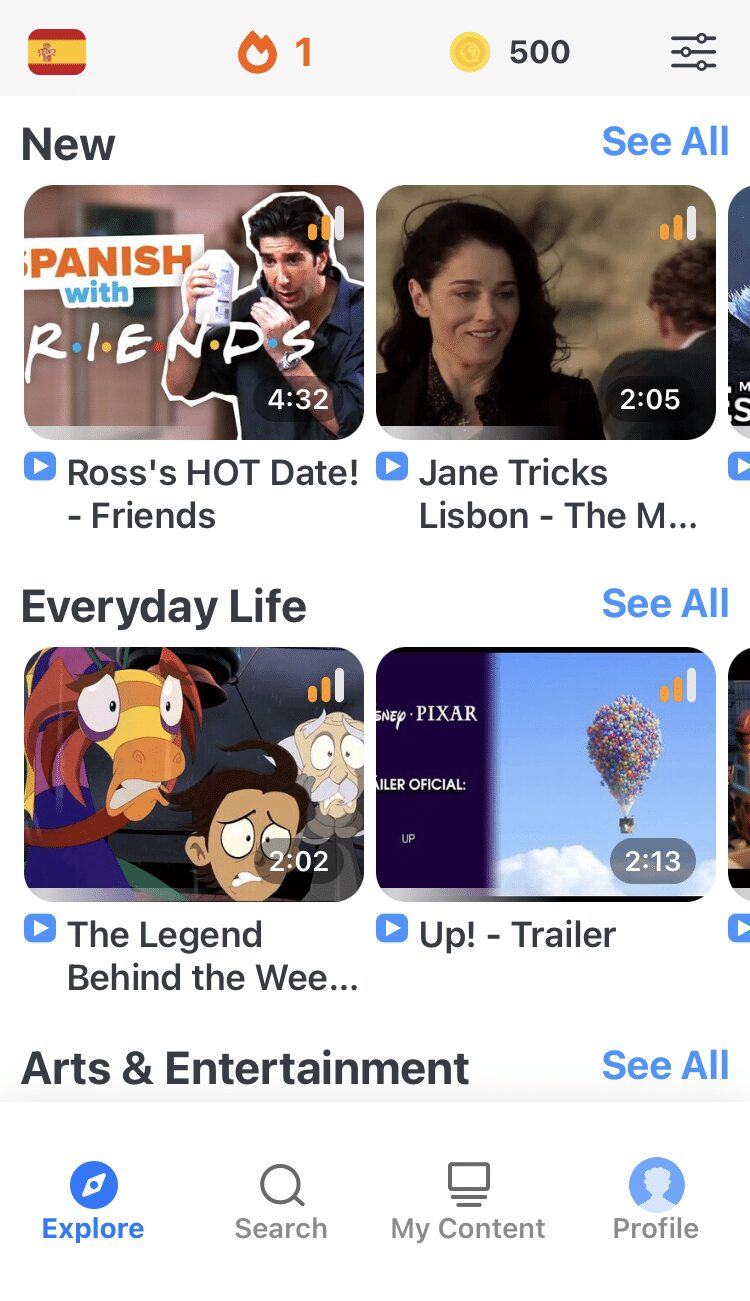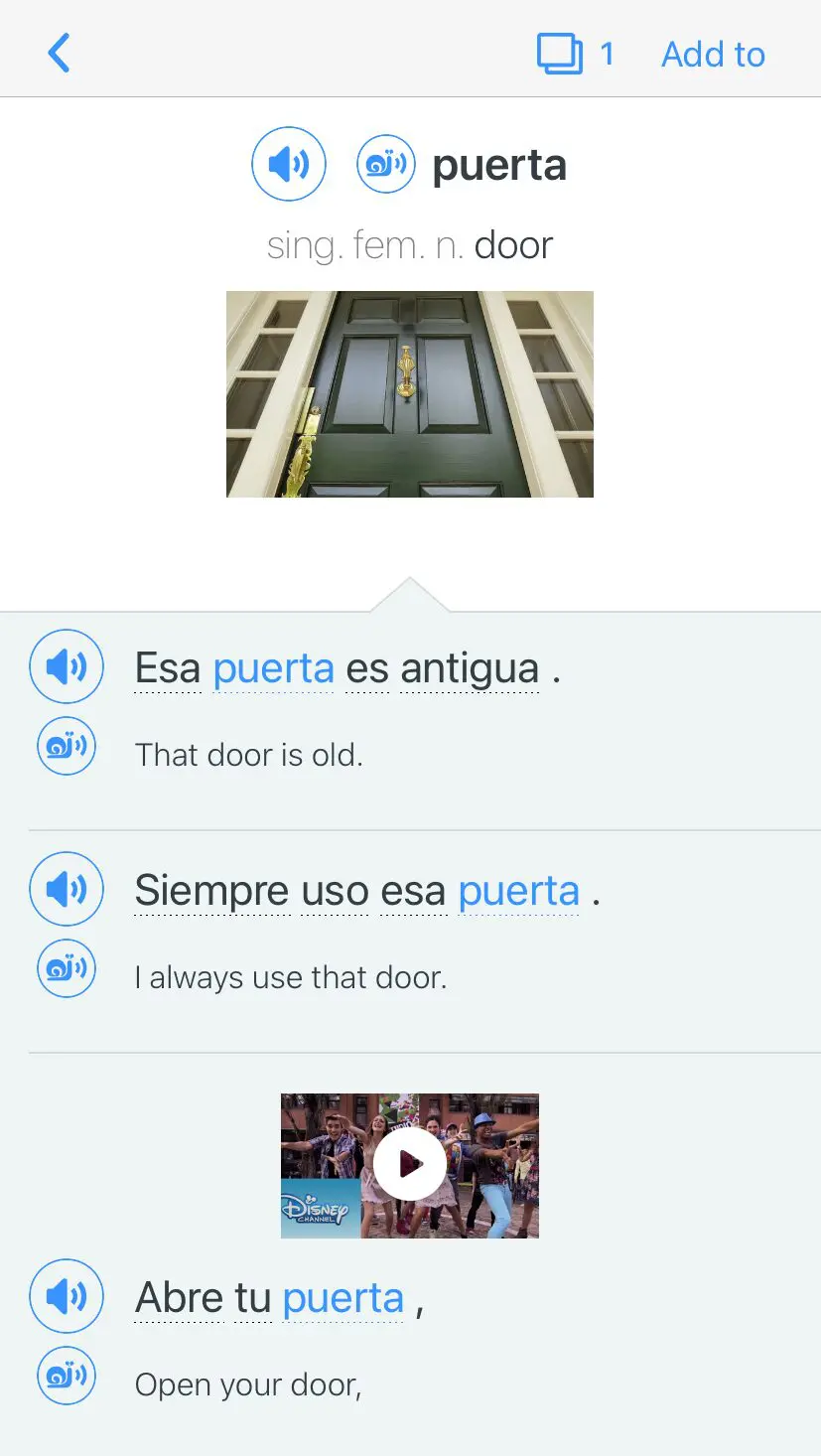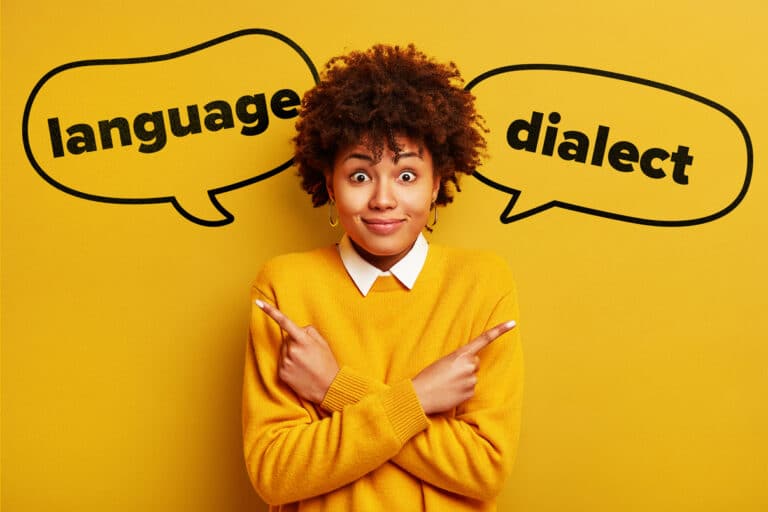How Long Does It Take to Learn a Language? It Depends

You already know there are many benefits of learning another language. But the question that most learners have is the amount of time it takes to reach fluency in another language, especially when some seem to pick up languages more quickly than others.
In this guide, we’ll take a detailed look at the different factors that can affect how long it’ll take to learn your target language.
Download: This blog post is available as a convenient and portable PDF that you can take anywhere. Click here to get a copy. (Download)
How Long to Learn a Language: The Quick Answer
The length of time it takes you to learn a language truly depends on what level you’d like to reach, your chosen language and how dedicated you are to studying.
In many cases, however, learners can reach a usable intermediate level in their target language within about three months to a year.
Achieving full fluency (a near-native level) often takes at least one year, although a more realistic estimate would be two to five years for moderate- and highly-dedicated learners.
Here’s a summary of the time estimate by the Common European Framework of Reference for Languages (CEFR) scale:
| Language Family | Languages Include | Hours to Beginner | Hours to Intermediate | Hours to Advanced |
|---|---|---|---|---|
| Romance | Spanish, French, Italian, Portuguese, Romanian | 70-200+ | 300-600+ | 700-1000+ |
| Germanic | German, Dutch, Swedish, English | 80-250+ | 350-650+ | 800-1100+ |
| Slavic | Russian, Polish, Ukrainian, Czech | 100-300+ | 500-800+ | 900-1800+ |
| East Asian | Chinese, Japanese, Korean | 100-500+ | 800-1700+ | 2200-2500+ |
What Skill Level Are You Aiming For?
From the start, it’s critical to get an idea of your destination. Just how much of your target language do you want to master?
The higher the skill level you’re aiming for, the more time you’ll need to commit. But we can break this down even further, with the help of the CEFR.
The CEFR is a widely-used scale for calculating and categorizing foreign language proficiency levels. The six levels ascend from most basic to most advanced: A1, A2, B1, B2, C1 and C2.
Beginner level
CEFR scale estimate: A1-A2
Appropriate for: Very basic conversations, “survival” vocabulary, traveler essentials
Time estimate: A few months
If you just want to know the bare necessities of your target language, then you’re striving for the beginner level.
The beginner level contains the “easiest” parts of the language, but it can come with its own challenges. This is especially the case when the language is very different from your native tongue. It may take some time to get used to the new words, sounds and rules.
That said, with the right amount of dedication and effort, you can usually expect to reach beginner level fluency within a handful of months.
Intermediate level
CEFR scale estimate: B1-B2
Appropriate for: Simple typical conversations with native speakers, jobs that requires some language skill
Time estimate: Several months to a year or more
The intermediate level is the steady middle-ground that can get you quite far in everyday life. It’s the skill level to reach if you want to start having simple interactions with real native speakers, which is a great goal to aim for!
In B2 territory (upper-intermediate), you may be able to put your skills to business use for very basic tasks.
Most learners can reach the intermediate level of B1 within a series of months, though it can take a year or more if you want to bump up to B2.
Advanced level
CEFR scale estimate: C1-C2
Appropriate for: Interacting confidently with native speakers, understanding native-level and sophisticated content, professional and business interactions
Time estimate: Several years
The holy grail for many a language learner, the advanced level is when you’re really comfortable using your target language for both basic and complicated matters. It’s the grounds for true fluency that positions you quite close to the podium of native speakers.
Reaching this point will, of course, take the longest time out of any of the levels. With rigorous study, your studies will likely take several years.
What Language Are You Learning?
Certain languages may be “easier” to pick up, which can mean faster progress. Others can be much more difficult and require more study time.
Romance languages
Includes: Spanish, French, Italian, Portuguese, Romanian
Time estimate by CEFR scale:
- Beginner (A1-A2): 70-200+ hours
- Intermediate (B1-B2): 300-600+ hours
- Advanced (C1-C2): 700-1000+ hours
The elegant Romance languages are well-loved and widely-spoken around the world. They’re appealing choices for learners seeking to pick up a useful second language.
Romance languages also tend to be relatively easy for English speakers to learn. The usage of the Latin alphabet and reasonably predictable grammar patterns can make the language features more palatable.
The biggest learning pitfalls tend to relate to proper pronunciation and verb conjugation. These topics can be difficult for beginner learners to grasp and for more advanced learners to master.
French in particular is known for tricky pronunciation, whereas a language like Spanish follows more consistent pronunciation rules. The many verb tenses in Romance languages can create a steep learning curve for English speakers (we only have a few), especially as you move into the intermediate levels.
Germanic languages
Includes: German, Dutch, Swedish, English
Time estimate by CEFR scale:
- Beginner (A1-A2): 80-250+ hours
- Intermediate (B1-B2): 350-650+ hours
- Advanced (C1-C2): 800-1100+ hours
Because English falls into this language subfamily, it naturally won’t have too many conflicts with its lingual kin. These languages can be useful for travel, business and appreciating pop culture exports like Swedish films and German music.
English speakers learning a Germanic language will happily notice some familiar vocabulary, pronunciation rules and even basic grammar structures. All of these and more can make these languages cozy “second language” choices.
The biggest conflicts with Germanic languages can arise from some complex grammatical aspects. For example, German has cases and gendered articles, both of which are common sore spots for English speakers to grasp.
Slavic languages
Includes: Russian, Polish, Ukrainian, Czech
Time estimate by CEFR scale:
- Beginner (A1-A2): 100-300+ hours
- Intermediate (B1-B2): 500-800+ hours
- Advanced (C1-C2): 900-1800+ hours
Slavic languages are often useful for careers in business and international relations. They’re also known for being the mother tongues of many great literary figures.
The dynamics of the various Slavic languages are highly intertwined, and knowing one can mean you’ll be able to speak another one with relative ease (as is the case for Czech and Slovak, for instance).
Since they fall into the Indo-European language family like Germanic and Romance languages, Slavic languages might contain some vocabulary familiar to English speakers.
But overall, Slavic languages are quite difficult for English speakers to learn. They sport dissimilarities to English in most aspects, so they truly can feel like lingual terra nova.
Learners often struggle with memorizing complex grammar rules, such as multiple case inflections and difficult verb conjugations. The pronunciation of unfamiliar sounds can also prove challenging.
East Asian languages
Includes: Chinese, Japanese, Korean
Time estimate by CEFR scale:
- Beginner (A1-A2): 100-500+ hours
- Intermediate (B1-B2): 800-1700+ hours
- Advanced (C1-C2): 2200-2500+ hours
Around the world, the alluring East Asian languages are rising in popularity. A big reason may be their relevance in pop culture, but these languages are also widely spoken and can be especially critical for global business entrepreneurs to know.
Anyone who pursues these tongues is definitely worthy of some credit, because East Asian languages are notorious for being difficult. They demand that learners become familiar with entirely new vocabulary, unique writing systems and unfamiliar phonetic rules.
Many struggle with East Asian language pronunciation and grammar rules, as well as reading and writing fluency. However, the challenges you face will depend a lot on which language you learn.
For example, English speakers often find Chinese grammar easier to grasp than the more complicated Japanese grammar rules. But Chinese poses a unique challenge as a tonal language, while Japanese and Korean learners don’t need to worry about that.
How Many Hours Per Week Should You Study a Language?
For the casual learner
Time investment: 1.5 hours
You’re the type who’s not overly serious about the language. You’d like to cruise through your studies, picking up learning here and there at your own pace.
The casual learner should try to put in at least one and a half hours (90 minutes) per week if they want to make progress in their language skills without major setbacks. Anything less can weaken your studies and make improvements sluggish.
Due to the relatively lax study schedule, you can expect your skill advancement to “reasonable” fluency (say, B2-level intermediacy) to be achievable in terms of years.
For the reliable student
Time investment: 3 hours
You’re the type who has a steady plan jotted out for your language studies. You do the work consistently, give yourself homework and review material as needed.
Most of the time estimates listed above will likely apply to this learner.
The reliable student should aim to study for at least three hours per week. Study times and lessons should also be scheduled beforehand and not randomly decided—a lack of consistency can make one prone to slacking off, after all!
For the avid scholar
Time investment: 7 hours
You’re the super student who goes above and beyond in your studies. You’re keen to “live and breathe” your target language, so much so that you may even venture abroad to immerse yourself in it.
The avid scholar may eagerly dedicate at least seven hours per week to language learning.
However, if the immersion method is utilized, it can be argued that language studies will be constant throughout the day, which can significantly speed up language skill growth.
How Are You Learning Your Language?
How you get your language lessons can have a major effect on the time estimate. Many learners tend to have a mix-and-match approach and combine multiple study methods. Doing this can improve skills quicker than just using one method.
Self-study
Best for learners who: Are very self-motivated, need to work at their own pace, are resource hoarders
Time estimate: Several years to reach middle- to upper-intermediate level
Many language learners today classify themselves as self-study types. They’re not limited to any one type of learning resource, whether it’s a textbook, a website, instructional videos or even podcasts.
Of course, the accessibility of resources can vary—more popular, widely-spoken languages are likely to have more resources than less popular ones.
Consistent motivation is key to the successful self-learner. Self-study tends to be the method that takes the longest in reaching language proficiency.
If studies are frequent and consistent, it can take a good handful of years to reach B1 or B2 proficiency. Also important to note is that “speaking” fluency tends to be imbalanced for self-learners, who often don’t practice their verbal skills as much.
Traditional language courses
Best for learners who: Enjoy interaction and instant correction, need a set learning structure, are seeking test prep
Time estimate: A few years to reach upper-intermediate or lower-advanced levels
The classroom experience can be hard to grow out of, for good reason. You get a dedicated instructor who can provide direct instruction and feedback on your work. You’re given assignments and tests with deadlines and rubrics.
Outside of a classroom, you can also opt for online language courses and learn from the comfort of your own home.
Complete beginners to a language (or to the language learning process in general) may find courses the most practical option for picking up A1 or A2 level basics. This is especially the case for more complicated languages, such as East Asian ones.
But curriculum expectations can make lessons feel very standardized. It won’t always cater to your needs.
If your courses are regular, it can take a few years to reach B2 or even a little past C1 level. Note that many courses tend to have a stronger focus on meeting the levels of standardized language proficiency tests, which can mean more emphasis on reading or writing fluency.
Personal tutor
Best for learners who: Prefer private lessons, have specific learning wants or needs, want an organized yet flexible schedule
Time estimate: A few months to a year to reach mid- to high-intermediate levels
With a personal tutor (in-person or online), you can get individual instruction and feedback that can quickly and comfortably boost your skills. Private tutorship is also particularly useful for building conversational fluency.
It may take some time to find the right tutor who can accommodate your learning preferences and schedule. In addition, some tutors, unless they’re qualified, may not be able to precisely gauge your skills.
If your tutoring sessions are very regular and cumulative, it can take a series of months to a year to reach the intermediate B levels.
Learning abroad
Best for learners who: Thrive in immersion, want unrelenting exposure to language
Time estimate: A number of months to reach a high-intermediate level
Whether you join a school-hosted program or want to learn solo as a restless tourist, going abroad to learn a language is one of the fastest and most rewarding ways to achieve fluency.
In a country that speaks your target language, your language practice will be constant and realistic, and you get to experience the culture as well.
The biggest drawback is, of course, the cost of traveling (which is separate from the cost of a language program itself). You’ll also have to leave your home and all your creature comforts for an extended period of time.
Free or affordable programs and software can give you a taste of immersion learning at home. FluentU, for example, helps you study with material made by and for native speakers.
FluentU takes authentic videos—like music videos, movie trailers, news and inspiring talks—and turns them into personalized language learning lessons.
You can try FluentU for free for 2 weeks. Check out the website or download the iOS app or Android app.
P.S. Click here to take advantage of our current sale! (Expires at the end of this month.)
If your studies are intensive and you actively apply your language knowledge everyday, it could take a matter of months to achieve upper-intermediate language proficiency. A year or two can even edge you towards the advanced C levels.
FAQ About Language Learning Timeframes
How long does it realistically take to learn a language?
You’ll need to figure out where you fit into all of the above categories to answer this question.
In general, though, if you’re looking to reach a high-intermediate level you’ll likely be studying quite frequently for at least six months to a year or more.
Can you learn a language in three months?
Yes—to an extent.
You’re not going to end up fully fluent, but you really can make significant progress in three months.
Again, learning a language that’s pretty similar to your native tongue will make this easier. Regardless of the language you choose to learn, however, if you truly dedicate yourself to the task, you will find success.
What is the easiest language to learn?
Romance languages are typically considered the easiest for native English speakers to learn. Think Spanish or French—both are popular choices with a ton of great learning resources.
Another easy option is Dutch. It’s part of the Germanic language family, shares a good deal of cognates with English and also does not employ a case system.
Time waits for no one, so now that you have a better idea of what to expect, don’t dally!
Start your language learning journey and enjoy the ride.
And One More Thing...
If you want to learn a new language with real-world videos, let me tell you about my favorite language-learning tool–FluentU.
With FluentU, you can turn any subtitled YouTube or Netflix video into an interactive language lesson. That means you’re not just studying a language—you’re experiencing it exactly as native speakers use it.
No boring drills. No dry textbooks. Just the kind of content you’d actually watch anyway, but with tools to help you learn. My favorite feature lets you import YouTube videos directly into your FluentU account.
And that’s just the beginning! You can also check out our extensive video library packed with music videos, movie trailers, news clips and more!
Everything is organized by difficulty level, media type, and topic, so you can easily find videos that match your interests and skill level.
Personally, I love watching clips from movies and shows where there’s plenty of slang and expressions that will help you understand native speakers–and sound more like them!
As you watch, you’ll follow along with interactive, dual-language subtitles. Come across a new word or phrase? Just hover over it for an instant translation or click to hear its pronunciation, see example sentences, and more.
Once you’re done watching, FluentU reinforces what you’ve learned by showing you more examples of key words and phrases from the video—then quizzes you to check your understanding. You’ll even get extra practice with tricky words and reminders when it’s time to review.
We know what it takes to make real progress in a new language, and we’ve built FluentU to help you get there. You can use FluentU on your computer, tablet, or download our app from the App Store or Google Play.
Ready to start learning? Click here to take advantage of our current sale (it expires at the end of this month). And your first 2 weeks are free!












